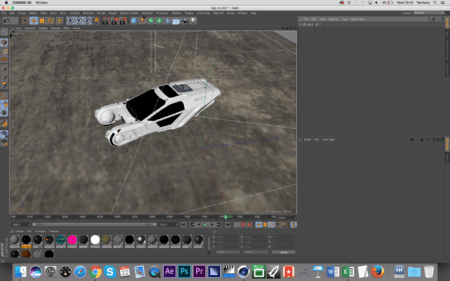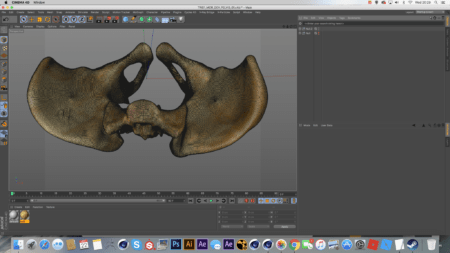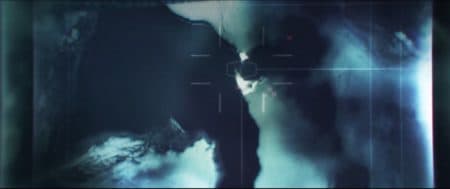People remember how groundbreaking the original Blade Runner film was, a masterwork of filmmaking that finally got its deserving sequel more than three decades later.
Blade Runner 2049
Warner Brothers describes the new film this way: Blade Runner 2049, directed by Oscar-nominated director, Denis Villeneuve (Sicario, Arrival) takes place three decades after the events of the first Blade Runner film in the aftermath of the ‘Blackout’, an apocalyptic type of episode that has deeply altered day-to-day life and technology in Los Angeles. The film features a new blade runner, LAPD Officer K (Ryan Gosling) who unearths a long-buried secret that has the potential to plunge what’s left of society into chaos. K’s discovery leads him on a quest to find Rick Deckard (Harrison Ford), a former LAPD blade runner who has been missing for 30 years.
The Challenge Met by Cinema 4D at Territory Studio
London-based Territory Studio made extensive use of MAXON’s Cinema 4D software as the cornerstone digital content creation (DCC) tool on Blade Runner 2049. The studio used it to produce story-specific screen graphics and concepts for on-set and post visuals that appear extensively throughout the iconic sci-fi sequel.

01 – Images here show how the team created new screens for Officer K’s dilapidated Spinner vehicle. This imagery is on display in the Spinner vehicle in the final film. (image: screen grab from film real by Territory Studio / Architosh. All rights reserved.)
Working under the creative direction of Andrew Popplestone, the Territory team first met with Villeneuve and Supervising Art Director Paul Inglis during pre-production in Budapest to discuss the theme of the Blade Runner 2049 universe. The basic question was: how should the technology look and feel in terms of a logical progression after three decades?
“Villeneuve did not want the design direction of the technology in Blade Runner 2049 to directly reference the original 1982 Blade Runner, rather his directive was to ‘reinvent’ computer technology and give it distinct organic, abstract, optical and physical qualities that felt like the same world 30 years later but could aptly represent the scale and impact of the ‘Blackout’ that destroyed digital capability and data files and basically made digital technology unusable – all key story elements in the film.”
Villeneuve did not want the design direction of the technology in Blade Runner 2049 to directly reference the original 1982 Blade Runner, rather his directive was to ‘reinvent’ computer technology and give it distinct organic, abstract, optical and physical qualities that felt like the same world 30 years later but could aptly represent the scale and impact of the ‘Blackout’ that destroyed digital capability and data files and basically made digital technology unusable – all key story elements in the film.
With an open creative brief, the Territory creative team started to think about how computer graphics display technology would function and look in this new world without relying on liquid crystal displays, analog and cathode-ray tube technologies.
“We forgot about established design workflows and spent the initial phase researching and experimenting with alternative methods to replace LED screen bioluminescence and actually avoided CG,” Eszenyi outlined. “This was a joyful part of the screen content creation process where we instead began by combining physical (optical lenses/old school projectors ) macrophotography and photogrammetry (fruit/meat ) and graphic techniques along with concepts from the art department to play around with texture and structure that led to the development of some interesting low-rez organic meshes and unique visual references.

02 – Officer K’s Spinner vehicle is shown modeled in Cinema 4D as it played a major role in the crucial moments in the film. (image: Territory Studio / Architosh. All rights reserved.)
“Our 3D workflow with Cinema 4D allowed us to flex our design capabilities and quickly import these elements to further explore lights, texture, materials, objects, noise and model creation while meeting tight deadlines,” he added. “Because of the intent of not using green screen elements on set, we used the Cinema 4D tools to design, create and deliver screens that matched story beats, and which were used on set to help the actors get informed about what’s happening or perform against a live sequence of images more naturally.”

03 – A key scene in the film features scanning a female pelvic bone, shown here and in the next image as a finished screen image from a display in the film. (image: Territory Studio / Architosh. All rights reserved.)
In the pivotal Morgue scene when K is scanning bones, Territory created a 3D model of a female pelvic bone and used the wide range of shading, reflectance, materials and flexible layering options in Cinema 4D to texture imagery and built a lens system with various optical qualities that was animated to show bone tissue in increasing magnification and abstraction in order to reveal a slightly futuristic electron microscope element.

04 – This is one moment in the film which Office K is scanning a female pelvic bone and this is an example of the imagery Territory Studio created using its toolchain based on Cinema 4D. (image: screen grab from film real by Territory Studio / Architosh. All rights reserved.)
The studio also used textural references in Cinema 4D in the notable Baseline Test scenes where Officer K is subjected to a routine LAPD Blade Runner “Voight-Kampff” protocol. “Rather than showing an iris, as in the original film, this new test is intended to be more precise and shows the view through the optic nerve, suggesting neural activity in the replicant,” explains Eszenyi. “We achieved organic abstraction by modeling grapefruit flesh.”
Officer K’s dilapidated Spinner vehicle features a set of displays for navigation that blend geographic, communication, scanning and surveillance monitor details. “Cinema 4D and X-Particles were used to successfully produce screen burn, ghosting, glitching and color degradation that brought an organic, chaotic nature to the aesthetic of the textural effects to let us show the audience that due to his low status, K is managing with outdated technology,” said Eszenyi. “We also crafted fly-through animations of the minimalist particle landscape that were roughly based on the shots or scene requirements that were put onto the screen, rendered out and processed through After Effects.”
The Territory Studio brief also included creating technology interfaces for LAPD environments including Sergeant Joshi’s office, Wallace Corp environments including luxury spinners, Deckard’s Las Vegas apartment and the complex neon Market animations for actual LCD displays.
Blade Runner 2049 was released in the United States on October 6, 2017.
Learning More
To learn more about Cinema 4D go here: https://www.maxon.net/en-us/
To learn more about the visuals—and see more stunning examples—from Territory Studio go to this dedicated page: http://territorystudio.com/projects/blade-runner-2049/
Image Credits
Format equates to “party with copyright” / “party with reserved rights of use.” (eg: image: FJMT / Architosh. All rights reserved.)



Reader Comments
Villeneuve.
Villeneuve.
Thanks Dave! 🙂
Thanks Dave! 🙂
Comments are closed.